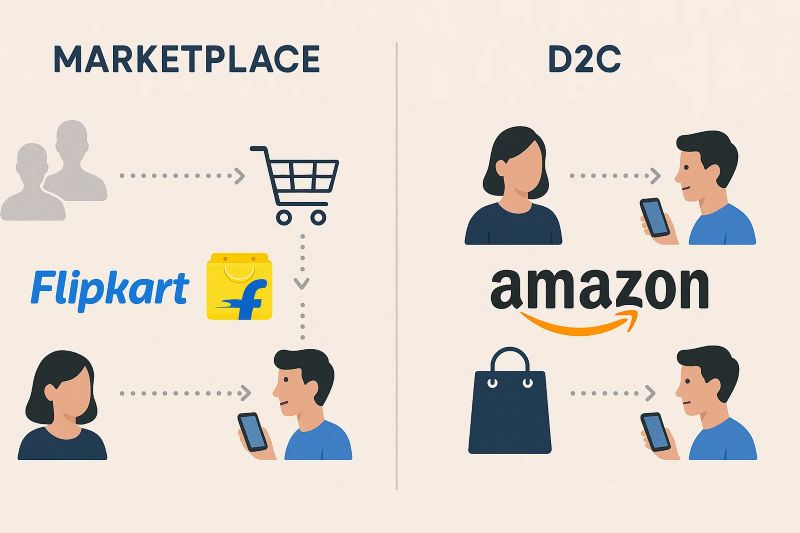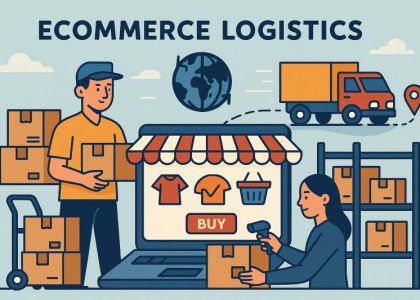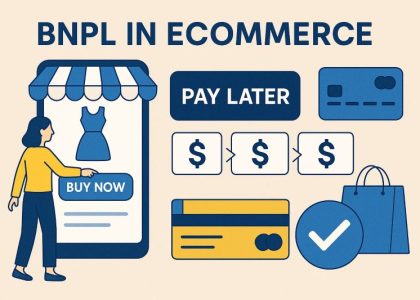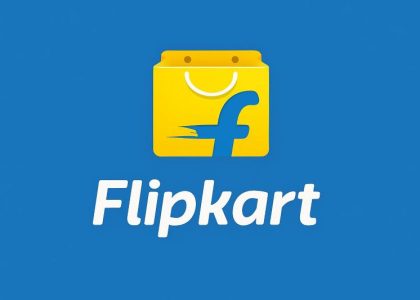Ecommerce in 2025 offers sellers two major paths: joining marketplace giants like Flipkart and Amazon or building their own Direct-to-Consumer (D2C) brand. Both strategies come with unique opportunities and challenges. Understanding how Flipkart and Amazon operate, and what these models mean for sellers, is essential for long-term success in India’s competitive ecommerce market.
What is the Marketplace Model?
In the marketplace model, platforms like Flipkart and Amazon act as intermediaries. They connect sellers with millions of customers and handle logistics, payments, and customer service. Sellers gain access to a massive audience without heavy investments in marketing or infrastructure.
Benefits of Marketplace Selling:
- Large customer base: Millions of shoppers are already on Amazon and Flipkart.
- Trust and credibility: Customers prefer established platforms for secure transactions.
- Logistics support: Fulfillment services (Amazon FBA, Flipkart Fulfilled) simplify shipping.
- Scalability: Sellers can expand faster without building their own systems.
Challenges of Marketplace Selling:
- High competition and price wars.
- Commission fees reduce profit margins.
- Limited control over branding and customer data.
What is the D2C Model?
The Direct-to-Consumer (D2C) model allows brands to sell directly to customers through their own websites or apps. Sellers manage their own pricing, branding, and customer experience.
Benefits of D2C Selling:
- Full control: Sellers manage brand identity, pricing, and promotions.
- Higher margins: No marketplace commission cuts.
- Customer relationships: Direct access to customer data enables personalized marketing.
- Brand loyalty: Stronger customer connections build repeat sales.
Challenges of D2C Selling:
- Heavy investment in digital marketing and logistics.
- Lower initial reach compared to Amazon or Flipkart.
- Responsibility for customer support and returns.
Flipkart’s Seller Strategy
Flipkart focuses on empowering Indian sellers, especially in Tier 2 and Tier 3 cities. Its seller program provides easy onboarding, access to Ekart logistics, and support for local languages. Flipkart’s marketplace model dominates its strategy, but it also encourages D2C partnerships through its platform. Sellers benefit from festive sales like the “Big Billion Days,” where Flipkart drives traffic and demand.
Amazon’s Seller Strategy
Amazon uses a hybrid approach—marketplace dominance with strong support for D2C brands. Amazon FBA (Fulfillment by Amazon) ensures fast delivery, while its advertising solutions give sellers powerful marketing tools. Amazon also runs Amazon Launchpad, a program designed to promote startups and emerging D2C brands. This allows sellers to leverage Amazon’s ecosystem while building their own brand identity.
Marketplace vs D2C: Which Should Sellers Choose?
The right model depends on business goals:
- Marketplace suits sellers who want quick access to a large customer base, minimal logistics management, and faster scalability.
- D2C suits brands that want control over customer relationships, higher margins, and long-term brand equity.
Many successful businesses adopt a hybrid strategy—selling on Amazon and Flipkart for reach, while building their own D2C channels for branding and loyalty. This balance ensures both growth and sustainability.
The Future of Seller Strategies in 2025
In 2025, sellers cannot ignore either model. Marketplaces like Flipkart and Amazon continue to dominate ecommerce traffic, while D2C growth is fueled by social media marketing, influencer collaborations, and personalized shopping experiences. The most successful sellers will integrate both approaches, using marketplaces for volume and D2C for loyalty.
Final Thoughts
Marketplace and D2C are not competing strategies but complementary ones. Flipkart and Amazon provide scale, while D2C gives control. Sellers who combine both effectively will thrive in India’s rapidly evolving ecommerce landscape.





